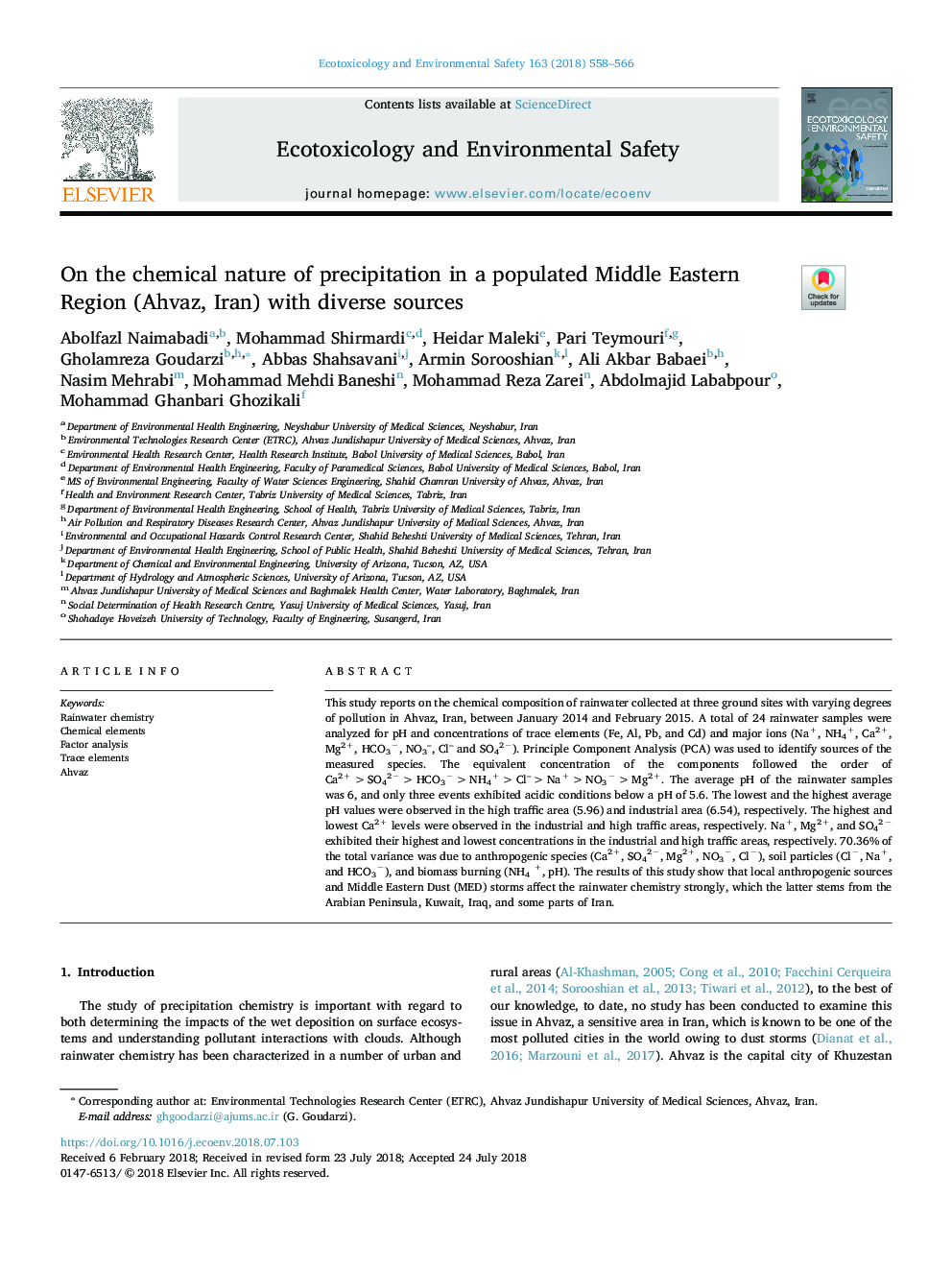| Article ID | Journal | Published Year | Pages | File Type |
|---|---|---|---|---|
| 8853310 | Ecotoxicology and Environmental Safety | 2018 | 9 Pages |
Abstract
This study reports on the chemical composition of rainwater collected at three ground sites with varying degrees of pollution in Ahvaz, Iran, between January 2014 and February 2015. A total of 24 rainwater samples were analyzed for pH and concentrations of trace elements (Fe, Al, Pb, and Cd) and major ions (Na+, NH4+, Ca2+, Mg2+, HCO3â, NO3-, Cl- and SO42â). Principle Component Analysis (PCA) was used to identify sources of the measured species. The equivalent concentration of the components followed the order of Ca2+ > SO42â > HCO3â > NH4+ > Cl- > Na+ > NO3â > Mg2+. The average pH of the rainwater samples was 6, and only three events exhibited acidic conditions below a pH of 5.6. The lowest and the highest average pH values were observed in the high traffic area (5.96) and industrial area (6.54), respectively. The highest and lowest Ca2+ levels were observed in the industrial and high traffic areas, respectively. Na+, Mg2+, and SO42â exhibited their highest and lowest concentrations in the industrial and high traffic areas, respectively. 70.36% of the total variance was due to anthropogenic species (Ca2+, SO42â, Mg2+, NO3â, Clâ), soil particles (Clâ, Na+, and HCO3â), and biomass burning (NH4+, pH). The results of this study show that local anthropogenic sources and Middle Eastern Dust (MED) storms affect the rainwater chemistry strongly, which the latter stems from the Arabian Peninsula, Kuwait, Iraq, and some parts of Iran.
Related Topics
Life Sciences
Environmental Science
Environmental Chemistry
Authors
Abolfazl Naimabadi, Mohammad Shirmardi, Heidar Maleki, Pari Teymouri, Gholamreza Goudarzi, Abbas Shahsavani, Armin Sorooshian, Ali Akbar Babaei, Nasim Mehrabi, Mohammad Mehdi Baneshi, Mohammad Reza Zarei, Abdolmajid Lababpour,
